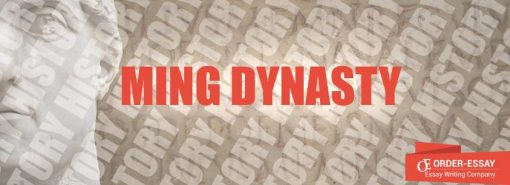
Nowadays, there is a considerable unanimity between historians and ordinary people judging Stalin’s and Hitler’s regimes. In fact, all recognize the fact that their principal similarity is the horrible consequences of their policies not only for the countries under their ruling but also for the whole world and humanity. Although the two dictatorships had similar and different features, the outcomes are strikingly alike, namely millions of deaths of innocent human beings. The present paper will profoundly consider and compare the peculiarities of the two doctrines.
First of all, both governments were totalitarian since Stalin was the dictator of the Soviet Union, and Hitler was an authoritative leader of the Nazi government. Moreover, there were no democracies, no liberties, and no freedoms in the Western worldview understanding. In both political systems, only one political party had the right to existence. In the USSR, it was the Bolshevyk Party, while the one in Germany was known as the Nazi Party. People were forced into membership in those parties, and the political opponents were persecuted. Hitler was proclaimed the all-powerful Fuhrer, and his party was declared the only party by the state law. In the communist party, there were opponents who disliked and did not support Stalin’s ideas, but they were at once sent to gulags and tortured there frequently even to death. The Soviet Union leader made purges in his Bolshevyk Party from time to time, and many members found themselves in Siberia. In contrast, Hitler imprisoned only the leaders of the other parties and banned the latter. As for the members of his own Nazi Party, he encouraged them with all kinds of privileges, from houses up to most lucrative job positions. Talking about the methods of repressions, they were quite similar, namely concentration camps and gulags, terrifying merciless secret police, the NKVD, and the Gestapo. It should be noted that the Nazi regime had only one leader, Hitler, and it did not last as long as the Soviet political system. Moreover, Stalin was replaced by other politicians who were not so repressive, and the cult of the leader was no longer supported.
Need custom written paper? We'll write an essay from scratch according to your instructions!
Plagiarism and AI Free
Price from only 10.99$/page
Call Now
Start Chat
Order Now
Indeed, the two authoritative leaders differed in the nature of their authority. While Stalin grounded his power mainly on fear and threats, Hitler was famous for his outstanding capacity to impact on people’s psyches and to charm them. The charismatic fascist leader was an amazing orator and possessed unbelievable powers of persuasion. It is worth noting that the ideologies differed in essence. The right-wing nationalist ideology of Nazi Germany emphasized the values of Aryan race and its superiority over all other races, especially the Jews. It is a well-known fact that the Holocaust was the attempt to eradicate the Jewish race as inferior and harmful to the Aryans and the whole universe. The results of this racial paranoia were millions of deaths in Treblinka, Auschwitz and other concentration camps for Jews. The Soviet ideology was, on the contrary, left-wing socialist (Marxist). Hitler and Stalin categorically condemned each other’s parties. In contrast to Hitler, the Soviet dictator did not support racial discrimination, at least officially. Instead, he grounded the communist regime on class conflict. In the process of combating “kulaks” (prosperous peasant farmers) and implementing collectivization, Stalin artificially created a famine in 1930-1933 when over three millions of people died. Additionally, thousands were shot or deported in the context of the class war.
In the economic sector, both dictators controlled all branches and industries and invested considerable resources in the armed forces. In fact, neither Hitler nor Stalin intended to create favorable conditions for the lives of ordinary people. Apparently, they got low wages and worked long hours for the goals of the rapid development of the country’s industry. Moreover, both rulers had unreal plans such as Five Year Plans in the Soviet Union and Goering’s Four Year Plan in Germany preparing army and industry for war. Nevertheless, there were some differences. Hitler left private enterprise, farmers, and businesses, while Stalin destroyed Soviet farmers, “kulaks” as a class through “collectivization,” and all production was state-owned and centrally planned.



Another point of similarity between the dictators is that they established their own personality cults. Stalin was autocratic and obsessed with the desire for absolute and limitless power. He made everything possible to indoctrinate people with his figure so that they worshipped and obeyed him without questioning. In fact, he achieved it by terror and total censorship. Moreover, the whole country had his name on streets and towns, while pictures and statues of him were everywhere, from schools to libraries. Furthermore, the history at school and universities was taught in such a way as to make him a hero and the wisest ruler of all times. In this respect, the fascist leader was an almost identical reflection of the communist one. He established a “Cult of Hitler Worship.” Hereby, he did all in his power to force the people of Germany to love him and consider his figure to be a caring father who will help and support them. His only goal and paranoia was being the absolute leader forever. The same as Stalin, he utilized both propaganda and terror to support his cult status. Children were also raised in love and worship for Hitler, while their best holiday gift was Mein Kampf. Finally, cultural life was controlled and strictly directed by the political doctrine. The content of the plays, books, songs, poems, and newspapers was under dominance and threat of death and repressions.
Get a Price Quote
In conclusion, both regimes left unparalleled horrible traces in the world’s history and are associated in the minds of people with death, injustice, and violence. Is spite of debate concerning the question of who was worse, the truth is that humanity should never let such personalities become leaders and create evil.








